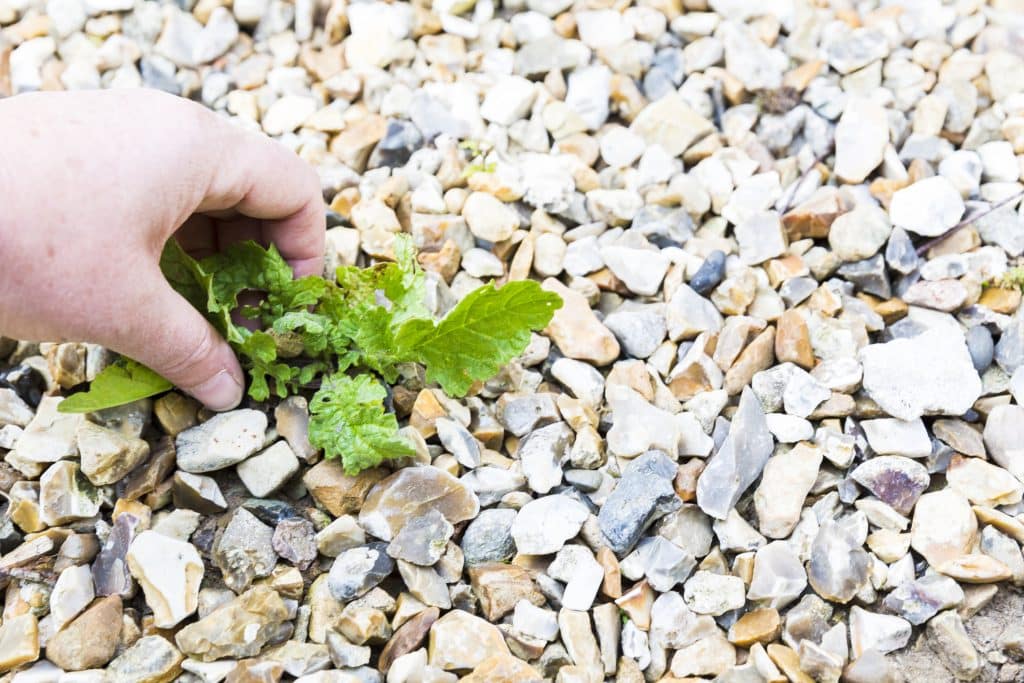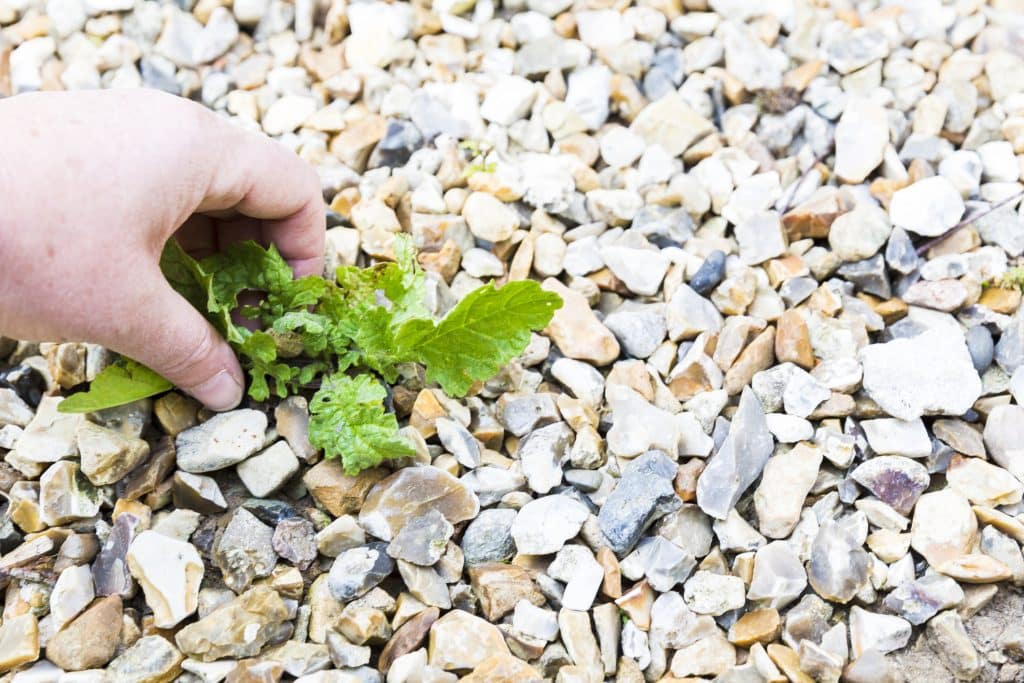Gravel pathways add authentic charm to a garden or courtyard. However, their biggest drawback is the invasion of weeds that disrupt the visual harmony and complicate maintenance. Instead of spending hours weeding or using harmful chemical products, there is a proven solution. Landscape professionals have a well-kept secret for keeping gravel pristine and free from unwanted weeds.
You may be familiar with the trick of using geotextile felt, which blocks the growth of weeds beneath the gravel, but did you know there is an even more discreet and effective method to enhance this protection? Discover the combined techniques of professionals for consistently clean gravel here.
Why Do Weeds Invade Gravel?
Before exploring solutions, let’s understand the problem. Weeds do not grow randomly. They establish themselves where they find a suitable environment, and while gravel is mineral, it often provides a favorable setting:
- Accumulation of organic matter: dead leaves, dust, and soil form a fertile layer between the stones.
- Transported seeds: wind, rain, or even your shoes bring seeds that germinate in these gaps.
- Stagnant moisture: compacted soil beneath the gravel retains moisture, promoting root development.
The result? Your driveway gradually transforms into a wild field. Fortunately, solutions do exist to halt this phenomenon sustainably.
The Landscaper’s Trick: Geotextile Felt, An Essential Tool
One of the most effective techniques adopted by professionals is to lay geotextile felt beneath the layer of gravel. This synthetic material has two major advantages:
- It prevents weeds from breaking through the gravel by blocking their growth beneath the surface.
- It allows water to pass through, preventing puddles and the accumulation of moisture that encourages germination.
How to Properly Install It?
- Prepare the soil: remove all existing weeds, including their roots, and level the ground.
- Lay the felt: roll it out across the entire surface, overlapping the edges by about 10 cm to avoid openings.
- Secure it: use metal stakes or pegs to keep the felt firmly in place.
- Add the gravel: apply a layer of at least 5 cm to ensure good coverage.
With this method, you can reduce weed proliferation under your gravel by up to 90%.
The Experts’ Little-Known Tip: Gravel Stabilizer
If you want to go even further and eliminate all weeding, know that there is a trick that few homeowners are aware of, but which landscapers use for a perfect result: gravel stabilizer.
What Is It?
This is a honeycomb structure, usually made of polypropylene, that is placed between the soil and the gravel. Each cell holds the stones in place, thus preventing the accumulation of debris and the proliferation of weeds.
Why Is It Effective Against Weeds?
- The gravel stays in place, preventing the formation of areas where soil could accumulate.
- Seeds have no fertile support to germinate.
- Water drains perfectly, reducing stagnant moisture.
How to Install It?
- Prepare the soil as you would for geotextile felt: remove the weeds and level it.
- Place the stabilizer directly on the prepared soil.
- Add the gravel, ensuring that all cells are filled.
This device is ideal for driveways or large areas where maintenance would be too cumbersome. Once in place, it becomes virtually invisible and provides impeccable gravel for years.
Natural Alternatives to Eliminate Existing Weeds
Even with all these precautions, some weeds may still appear, especially on the surface. Here are some ecological methods to eliminate them without polluting your soil.
- White vinegar: sprayed directly on the weeds on a sunny day, it quickly dries them out.
- Boiling water: poured over the shoots, it destroys their cells and prevents regrowth.
- Baking soda: sprinkled on weeds, it disrupts their growth by altering the soil pH.
- Table salt (in moderation): it burns the roots but should be used carefully to avoid sterilizing the soil.
Perfect Gravel with The Right Combination of Techniques
If you want an impeccable, durable, and weed-free gravel driveway, combine these two techniques:
- Geotextile felt to block weeds beneath the surface.
- Gravel stabilizer to prevent any soil accumulation and ensure perfect drainage.
Add to this a minimal yet regular maintenance routine and some natural solutions to eliminate the occasional rebellious weeds, and you will enjoy neat, aesthetic gravel effortlessly for years.


